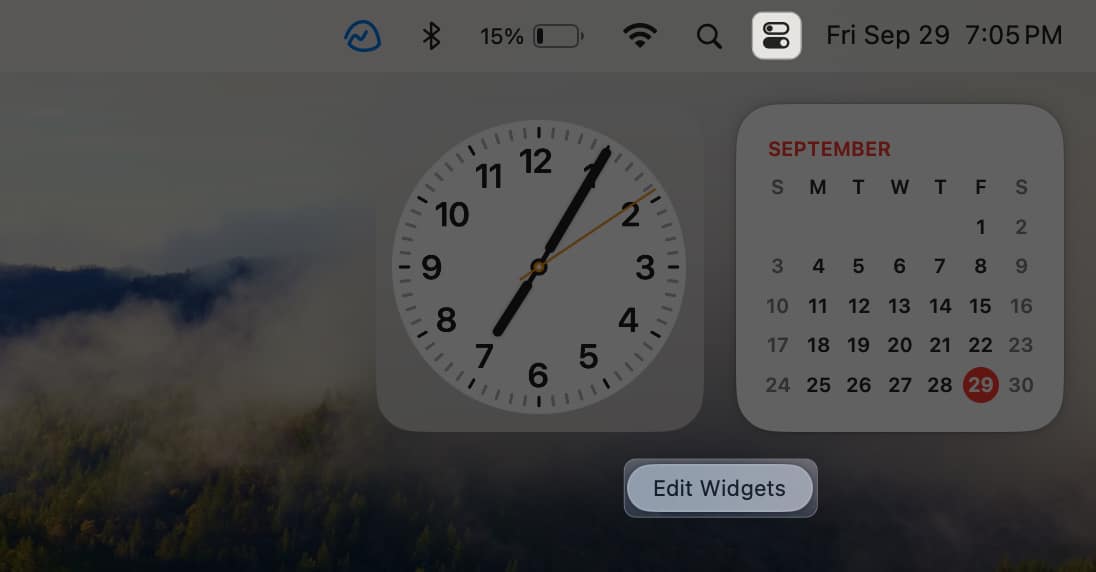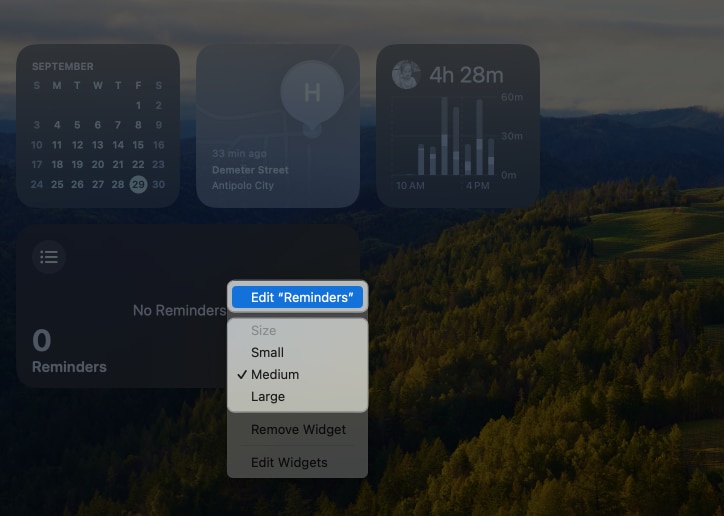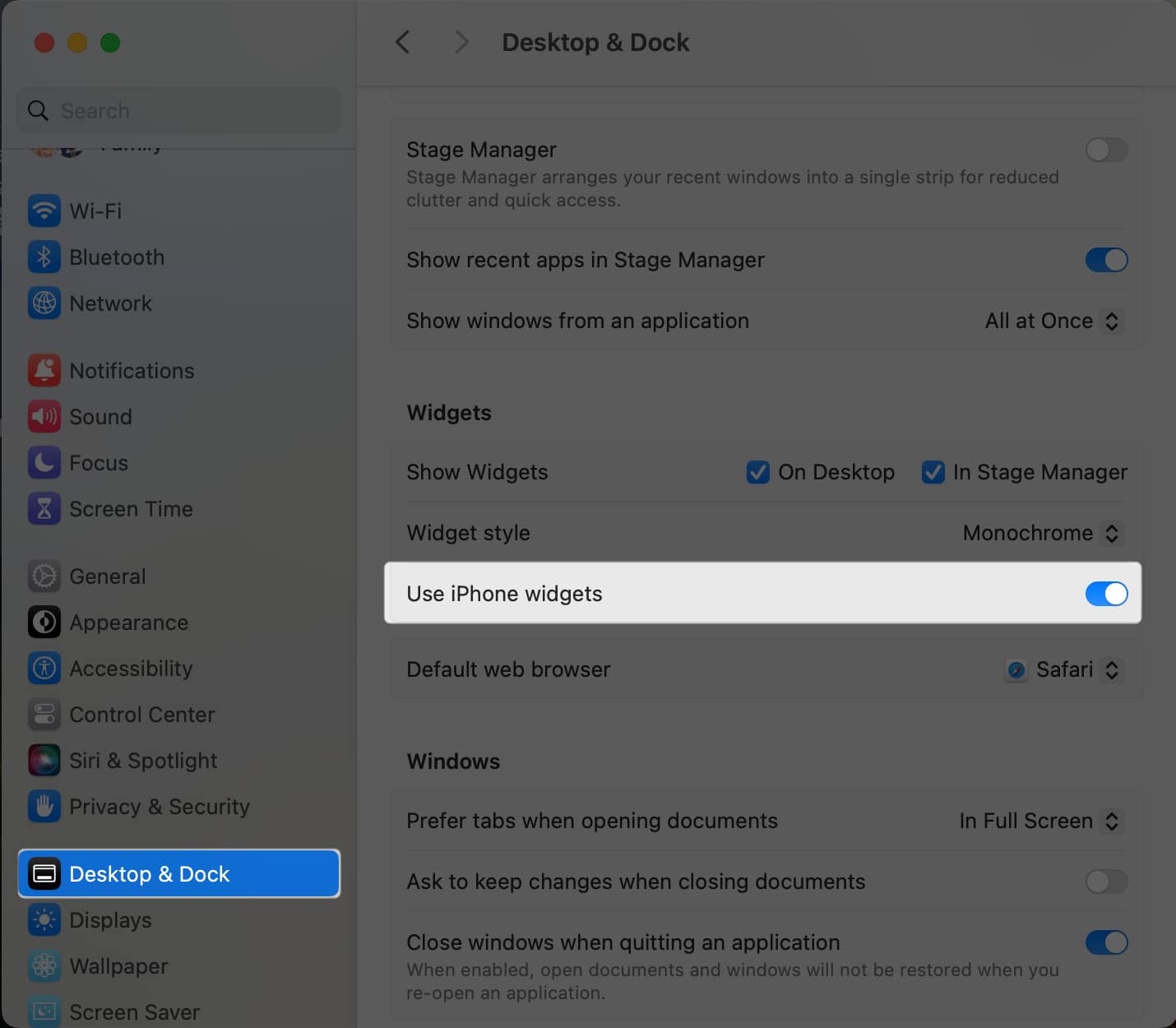Widgets offer a great way to get instant updates at a glance; however, the feature was previously buried in the Notification Center on Mac. With macOS Sonoma and later, Apple added widget support directly on the Mac home screen. You can even add your iPhone widgets on your Mac, boosting your productivity further. Here’s how to add, customize and use widgets on your Mac desktop.

Why you should use widgets on your Mac?
Using widgets on your Mac offers various benefits that can significantly enhance your productivity and overall user experience. I’ll list a few.
- Instant access to information: Widgets grant you immediate access to essential information, such as weather updates, calendar events, and to-do lists. This saves time and helps you stay organized.
- Personalization: You can tailor widgets to display the information that matters most to you. For a more visually appealing desktop experience, the widgets adapt to your wallpaper tint. When in the foreground, you will see the colorful widget. However, when you are using any other window on the desktop, the widget fades away.
- Enhanced efficiency: Widgets enable you to take action without opening individual apps. For instance, you can reply to messages, start timers, or add events to your calendar directly from the widgets, bypassing the need to open the respective apps like Messages, Clock, or Calendar.
- Increased productivity: Widgets provide relevant information and tools to accomplish tasks. You can utilize widgets to track project progress, stay updated on email, or receive reminders about upcoming events, ensuring better productivity.
How to add widgets on your Mac
There are two simple methods to add widgets to your Mac desktop.
1. Add widgets to Mac desktop by right-clicking
- Control-click or two-finger tap the wallpaper to see the contextual menu.
- Choose Edit Widgets.
- Search for a widget in the widget browser by scrolling through the widgets on the right pane, selecting a specific app from the left pane, or typing an app on the search field.
- Select a widget and choose your preferred widget style from the right pane.
- Click on the widget Add (+) button on the widget to automatically position it on the desktop or drag it to any part of the desktop. Change the widget’s location by dragging it anywhere on your desktop.
- Once you’re finished, click Done on the widget browser.
2. Add widgets to Mac desktop from the Notification Center
If you’re not a fan of putting widgets on your desktop, you can still put them in the Notification Center so they’re only visible when needed. To do so:
- Open the Notification Center.
- Click Edit Widgets at the bottom.
- Find a widget from the widget browser.
- To add and place a widget automatically on your Notification Center, click it or the Add (+) button that appears when you hover your cursor over it.
- You can also manually drag it to the right side of your desktop. Note that dragging it elsewhere on your desktop places the widget on your desktop instead of in the Notification Center.
- Change the widget’s location by dragging it up or down.
- Click Done once you’re finished.
How to customize widgets on Mac
- You can always customize your desktop widgets by changing their size: Just control-click on the widget → Select one of the sizes: Small, Medium, or Large.
- For some widgets, you can change the information it shows: Control-click the widget → Select Edit [app name], and change the information it shows.
How to change widget settings in macOS
Aside from their size, you can customize their appearance and where your widgets appear.
- To do so, head to the Apple menu → System Settings.
- Select Desktop & Dock from the sidebar → Scroll down to Widgets.
- Change where you want to see your widgets: Beside Show Widgets, choose where you want widgets to appear. By default, widgets show both On Desktop and In Stage Manager. Deselect either or both if you don’t want them to show there.
- Change your widget’s style: Select from Monochrome or Full-color, or alternate between the two with Automatic.
- Change the default browser you’re using for your widgets: Click on the drop-down menu beside Default web browser and choose from the available browsers on your Mac.
How to remove widgets on Mac
Removing widgets from your desktop or Notification is similar to removing apps from your iPhone or iPad’s Home Screen.
- To remove widgets from Mac desktop:
- Control-click or two-finger tap on the widget and choose Remove Widget.
- Control-click or two-finger tap on the widget and choose Remove Widget.
- To remove a widget from the Notification Center:
- Go to the Notification Center → Click Edit Widgets.
- Click the Remove (-) button at the top-left of the widget you want to remove, or control-click it and select Remove Widget.
How to use iPhone widgets on your Mac desktop
In addition to the Mac app widgets, you can use widgets from apps that are installed on your iPhone. To access the feature, your iPhone should be running iOS 17 or later and signed in with the same Apple ID. Moreover, you need to keep your iPhone close to your Mac or connect it to the same Wi-Fi network as your Mac.
Once you meet these requirements, you can synchronize your iPhone widgets with your Mac:
- Go to System Settings → Desktop & Dock → Toggle on Use iPhone widgets under Widgets.
- Once enabled, you should see available iPhone widgets in the widget browser. These will have the label From iPhone at the top right of the window.
Now you can access all the widgets available on your iPhone without downloading the app on your Mac — pretty neat, right?
Note that when you want to interact with such widgets on your Mac, you may see a pop-up like “Open [app name] on your iPhone to continue.” As the widget’s origin app is not installed in your Mac, you need to access it on your iPhone to interact with the features.
Widgets that are available on a Mac desktop
Below are the widgets that are built-in on your Mac:
- Batteries: lets you see the battery status of your Mac and your Bluetooth accessories
- Calendar: informs you of your upcoming events
- Clock: displays the current time
- Contacts: allows you to access the people you care most about easily
- Find My: notifies you of the whereabouts of the people you care most about
- Home: lets you quickly control your accessories
- Notes: gives you instant access to a specific note folder
- Photos: Gives you a slideshow of your featured pictures or memories.
- Podcasts: lets you jump in where you left off in a podcast.
- Reminders: lists reminders that you can tick right from the widget.
- Safari: Highlights the bookmarks and websites you cherish the most.
- Screen Time: shows your screen time activity for the day.
- Shortcuts: lets you quickly run a shortcut.
- Stocks: Reveals the most recent stock prices.
- Weather: Provides a forecast as well as the current weather conditions.
This list isn’t exhaustive and doesn’t include widgets from the third-party apps on your Mac and those on your iPhone.
In addition, Apple has claimed that it has made it easier for developers to create custom widgets for Mac. As a result, I believe that the Mac will soon be equipped with a wide range of widgets to satisfy various interests and needs.
That’s it!
To effortlessly use widgets on Mac, you can curate a desktop space that caters to your unique needs, providing quick access to information and tools that matter most to you.
Read more:











